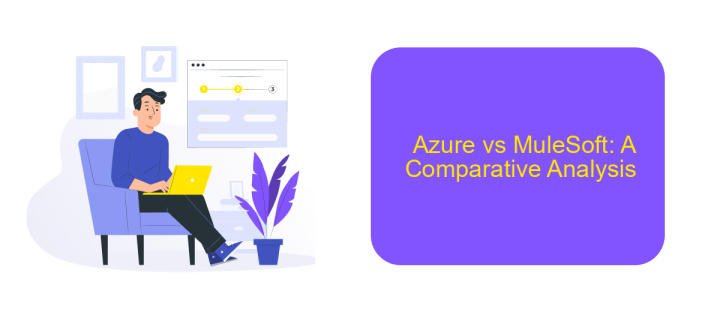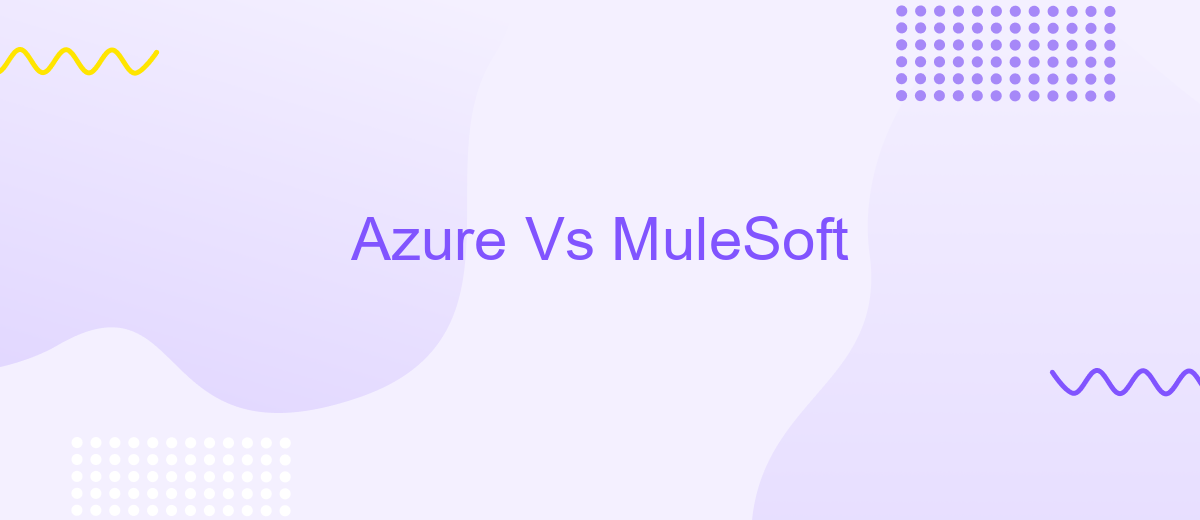Azure Vs MuleSoft
In the ever-evolving landscape of cloud computing and integration platforms, choosing the right solution for your business can be daunting. This article delves into a comparative analysis of Azure, Microsoft's comprehensive cloud service, and MuleSoft, a leading integration platform for connecting applications and data. By examining their features, capabilities, and use cases, we aim to provide insights to help you make an informed decision.
Introduction
In today's rapidly evolving digital landscape, businesses are increasingly relying on integration platforms to streamline operations and enhance connectivity between disparate systems. Two prominent players in this arena are Azure and MuleSoft, each offering robust solutions for integration needs.
- Azure: A comprehensive cloud computing service by Microsoft, offering a range of tools for building, deploying, and managing applications.
- MuleSoft: A leading integration platform that provides tools to connect applications, data, and devices seamlessly.
Choosing the right platform depends on various factors, including the specific requirements of your organization, the complexity of your integration needs, and your existing technology stack. Additionally, services like ApiX-Drive can further simplify the integration process by providing user-friendly tools to automate and manage data flows between different applications. By understanding the strengths and capabilities of both Azure and MuleSoft, businesses can make informed decisions to optimize their integration strategies.
Azure: Overview and Key Features

Microsoft Azure is a comprehensive cloud computing platform that offers a wide range of services, including computing, analytics, storage, and networking. It provides users with the flexibility to build, manage, and deploy applications on a global network using their preferred tools and frameworks. Azure supports various programming languages, databases, and operating systems, making it a versatile choice for developers and enterprises. Additionally, Azure ensures high availability and scalability through its extensive data centers spread across multiple regions worldwide.
One of the key features of Azure is its robust integration capabilities. Azure Logic Apps and Azure API Management enable seamless integration between different applications and services, both on-premises and in the cloud. For businesses looking to streamline their integration processes further, services like ApiX-Drive can be highly beneficial. ApiX-Drive simplifies the automation of data flows between various platforms, enhancing productivity and reducing manual intervention. Moreover, Azure's advanced security features, including multi-layered protection and compliance certifications, ensure that data remains safe and secure.
MuleSoft: Overview and Key Features

MuleSoft is a leading integration platform that enables organizations to connect applications, data, and devices seamlessly. It provides a unified solution for API management, integration, and automation, helping businesses streamline their processes and enhance operational efficiency.
- Anypoint Platform: A comprehensive integration platform that offers tools for designing, deploying, and managing APIs and integrations.
- API Management: Robust features for creating, securing, and monitoring APIs throughout their lifecycle.
- DataWeave: A powerful data transformation language that simplifies data mapping and transformation tasks.
- Connectors: Pre-built connectors for a wide range of applications and services, enabling quick and easy integrations.
- CloudHub: A fully managed cloud integration service that ensures high availability and scalability.
In addition to these features, MuleSoft's integration capabilities can be further enhanced with services like ApiX-Drive, which offers automated workflows and seamless integration with various platforms. By leveraging MuleSoft and complementary services, organizations can achieve a more connected and efficient digital ecosystem.
Azure vs MuleSoft: A Comparative Analysis

Azure and MuleSoft are two powerful platforms used for integration and cloud services, each with its unique strengths. Azure, developed by Microsoft, is a comprehensive cloud computing service that offers a range of solutions, including virtual machines, databases, and AI capabilities. MuleSoft, on the other hand, specializes in connecting applications, data, and devices with its Anypoint Platform, making it a leader in the integration space.
One of the primary differences between Azure and MuleSoft is their core focus. While Azure provides a broad spectrum of cloud services, MuleSoft is dedicated specifically to integration and API management. This distinction is crucial for businesses to consider when selecting a platform that best fits their needs.
- Azure: Broad cloud service offerings, including IaaS, PaaS, and SaaS.
- MuleSoft: Specializes in API integration and management.
- Azure: Strong support for AI and machine learning.
- MuleSoft: Comprehensive tools for connecting various applications and data sources.
Choosing between Azure and MuleSoft depends on the specific requirements of your business. For companies needing extensive cloud services with integration capabilities, Azure might be the better choice. However, for businesses focusing primarily on seamless integration and API management, MuleSoft offers specialized tools that can be further enhanced with services like ApiX-Drive, which simplifies integration processes even more.
Conclusion
In conclusion, both Azure and MuleSoft offer robust solutions for integration and cloud services, each with its own strengths and unique features. Azure excels in providing a comprehensive suite of cloud services, making it a preferred choice for enterprises looking to leverage a wide array of tools and services under one umbrella. Its seamless integration with other Microsoft products and services further enhances its appeal for businesses already invested in the Microsoft ecosystem.
On the other hand, MuleSoft stands out with its specialized focus on API management and integration capabilities, offering a flexible and scalable platform that can connect various applications, data, and devices. For businesses looking to streamline their integration processes, tools like ApiX-Drive can complement these platforms by automating and simplifying the integration workflows. Ultimately, the choice between Azure and MuleSoft will depend on the specific needs and existing infrastructure of the organization, with both platforms providing powerful solutions to meet diverse integration and cloud service requirements.


FAQ
What is the primary difference between Azure and MuleSoft?
Which platform is better for API management?
Can Azure and MuleSoft be used together?
Which platform is more cost-effective?
Are there any tools to simplify integration and automation between different platforms?
Apix-Drive will help optimize business processes, save you from a lot of routine tasks and unnecessary costs for automation, attracting additional specialists. Try setting up a free test connection with ApiX-Drive and see for yourself. Now you have to think about where to invest the freed time and money!

